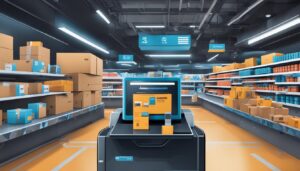
Stimulated on by this, scientists at the University of California, Berkely established a structure– Structure for Effective Robotic Adjustment (FERM)– that leverages ingenious methods to achieve what they state is “extremely” sample-efficient robotic control algorithm training. The coauthors state that, supplied simply 10 presentations amounting to up to 15 to 50 minutes of real-world training time, a single robotic arm can discover to reach, select, relocation, and pull huge things or turn a switch and open a drawer using FERM.
According to the researchers, FERM is basic to put together due to the fact that it simply requires a robotic, a graphics card, 2 electronic cameras, a handful of presentations, and a benefit function that guides the assistance finding out algorithm towards an objective. Open source structures like FERM assure to advance the cutting-edge in robotic control, nevertheless there stay concerns abouthow to determine progress As my associate Khari Johnson makes up, metrics used to figure out advancement in robotic understanding can differ based upon the job.
Advances in artificial intelligence have actually generated a range of robotics abilities, including understanding, pushing, pulling, and other things manage abilities. Nevertheless, general-purpose algorithms need to date been very sample-inefficient, limiting their applicability to the reality. Stimulated on by this, researchers at the University of California, Berkely developed a structure– Structure for Effective Robotic Adjustment (FERM)– that leverages ingenious methods to accomplish what they declare is “extremely” sample-efficient robotic control algorithm training. The coauthors state that, provided just 10 discussions amounting to up to 15 to 50 minutes of real-world training time, a single robotic arm can discover to reach, select, relocation, and pull huge things or turn a switch and open a drawer utilizing FERM.
McKinsey pegs the robotics automation capability for production occupations at around 80%, and the pandemic is probably to accelerate this shift. A report by the Production Institute and Deloitte discovered that 4.6 million production tasks will need to be filled over the next years, and barriers caused by physical distancing actions and a continuous uptick in ecommerce activity have really extended some logistics operations to the constraint. The National Association of Manufacturers states 53.1% of producers anticipate a modification in operations due to the health crisis, with 35.5% specifying theyre presently dealing with supply chain disruptions.
FERM might assist speed up the shift towards automation by making “pixel-based” assistance knowing– a type of expert system in which algorithms find to finish tasks from tape-recorded discussions– more data-efficient. As the scientists explain in a paper, FERM initially collects a little variety of presentations and shops them in a “replay buffer.” An encoder gadget finding out algorithm is pretrained on the presentation details consisted of within the replay buffer. An assistance finding out algorithm in FERM trains on images “improved” with info produced both by the encoder and the preliminary presentations.
According to the scientists, FERM is basic to put together due to the fact that it simply needs a robotic, a graphics card, 2 electronic cams, a handful of presentations, and a benefit function that guides the support finding out algorithm towards an objective. To the extremely finest of our understanding, FERM is the very first strategy to repair a diverse set of sparse-reward robotic control jobs straight from pixels in less than one hour,” the researchers composed.
Open source structures like FERM assure to advance the cutting-edge in robotic control, nevertheless there stay issues abouthow to determine development As my associate Khari Johnson composes, metrics utilized to determine development in robotic understanding can vary based upon the task. For robotics running in a mission-critical environment like location, for instance, precision matters above all.
” Under particular scenarios, if we have great things and you have a truly quick robotic, you can get here [human picking rates],” roboticist Ken Goldberg notified VentureBeat in a previous interview. “However they mention humans resemble 650 per hour; thats a great level. Its really tough to beat human beings. Were fantastic. We have actually established over numerous years.”






